The Ultimate Guide to Colors for Olive Skin Tones

Key Takeaways
- First figure out your olive undertone, then pick your colors. Take into account vein color, jewelry preference and how your skin reacts to different tops to determine if you're warm, cool or neutral.
- Let the green cast be your guide. Contrast your skin with white paper in natural light, then gravitate toward colors that complement that soft, green undertone.
- Match colors to your undertone for best results. Warm olive radiates in earth tones and golden metallics, cool olive glows in lilac, periwinkle and slate, and neutral olive thrives on taupe, navy and muted greens.
- Tweak your palette with the seasons. Olive skin is prone to tan golden or bronze in hue, so experiment with colors in natural light and adjust selections following a sun session but keep the SPF flowing.
- Stay away from hues that drain you. Avoid neon brights, icy pastels, fluorescent yellow, and stark white, and try questionable colors in both natural and indoor lighting prior to purchasing.
- Opt for textured or softly sheened fabrics like knits, linen or velvet, and double check outfits in both sunlight and warm LED lighting for consistency in flattery.
Clothing colors for olive skin tone are rich jewel, warm earth, and soft neutral shades that strike a balance between the green and golden undertones.
Deep emerald, teal and sapphire provide obvious contrast. Terracotta, rust and burnt orange warm the complexion. Cream, camel and warm gray make outfits easy to style.
Stay away from cool pastels that can fade your glow, and go for warm versions such as coral or peach.
To construct a stable palette, begin with three reliable shades, then layer on accent colors.
What is olive skin tone?
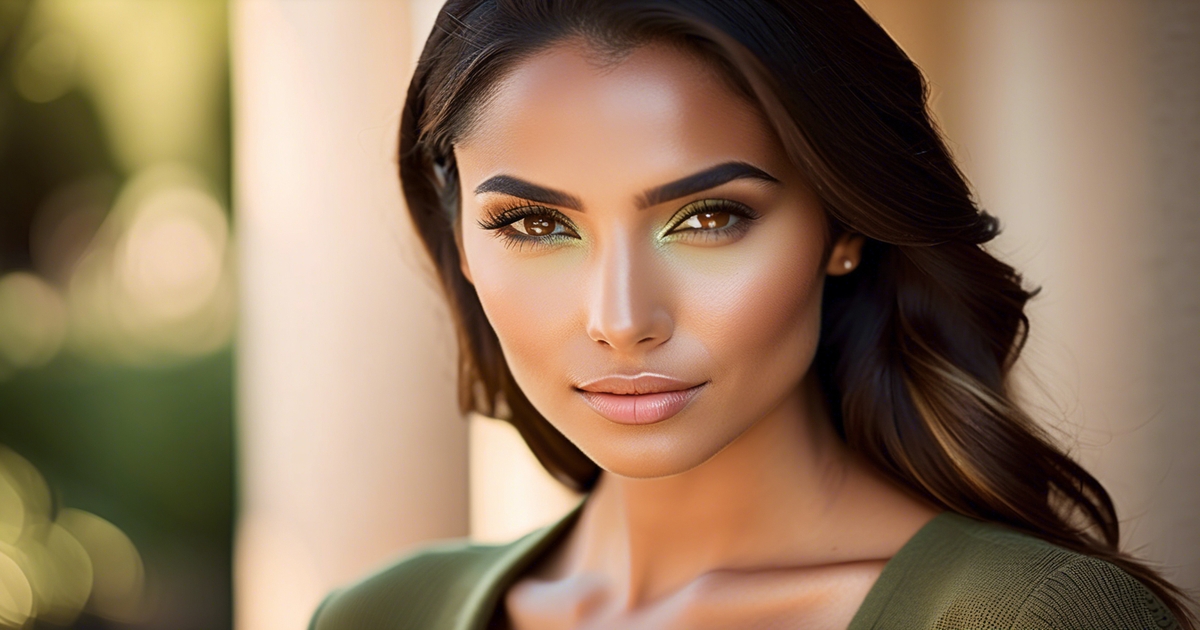
Olive skin tone is a complexion with a subtle greenish or grayish cast that distinguishes it from the typical warm, cool, or neutral classifications. It usually exhibits yellow, green, or gray undertones simultaneously, which is why it can shift warm or cool depending on lighting.
From light olive to deep olive, it appears in numerous ethnicities — including Mediterranean, Middle Eastern, and South Asian — but among many others across the globe. Since color is the surface of our selections, knowing you're in the olive group makes it easier to select clothing colors that brighten the face rather than mute it.
The wrong shade can make olive skin sallow or ashen, but the right hues harmonize with the green undertone and appear crisp.
The green cast
The sign that olive skin is lurking beneath the surface is a subtle greenish undertone, occasionally accompanied by a yellow tint. It's a color that can appear hard to pin down, looking soft inside and revealing more in sunlight or shade, when the green is more legible against white and tans.
Some individuals perceive more yellowish, others a prevailing green. That green cast can make green or yellow lean colors look great. Imagine deep teal, forest, olive drab, moss, chartreuse, mustard and warm camel.
Jewel tones with a cool edge—emerald, sapphire, aubergine—often work because they echo the undertone without fighting it. True peachy pastels or icy pinks will instead drain the face by contrast.
Let that greenish tilt be your compass as you shop both makeup and clothes. Hold fabric next to your cheek and see if your skin looks vibrant or washed out.
A quick check: stand by a window and place a white sheet of paper next to your jaw. If your skin reads slightly green or yellow against the white, you're probably olive.
The sun's effect
Olive skin tends to tan quickly and seldomly burns, developing a golden or bronze shimmer. That's due to increased melanin, which provides some natural defense, but sunscreen is still essential to reduce sun damage and spots.
Sun can deepen your olive tone and change the way colors react against your skin. Post-tan, deeper hues—rust, terracotta, emerald, indigo—tend to serenade.
In colder months, when your tone cools down, experiment with softer shades like sage, dusty rose or muted navy. Because olive skin is hyperpigmentation-prone, consistent SPF and kind treatment can keep your foundation smooth, so colors come through accurate.
The foundation test
Try foundation on your jaw and leave it on. It should disappear into the skin, not go pink or orange or gray. If it leaves an ashy edge, the base is too cool/rosy.
If it looks pumpkin, it's too warm. Select lines labeled for olive undertones or with a yellow‑green base. The incorrect shade can subdue the natural glow, or make uneven tone pop — which in turn, disrupts the way clothing colors appear adjacent to your face.
* NARS: shades with "Olive" tags in Light/Medium to Medium/Deep
* Estée Lauder Double Wear: "3W2 Cashew," "3W1 Tawny," and olive-lean options
* Fenty Beauty Pro Filt'r: 235, 255, 310, 345 with olive notes
* MAC Studio Fix: NC27–NC42 ranges with olive/yellow balance
* Makeup Forever HD Skin: Y and O shades with olive cues
Uncovering your olive undertone
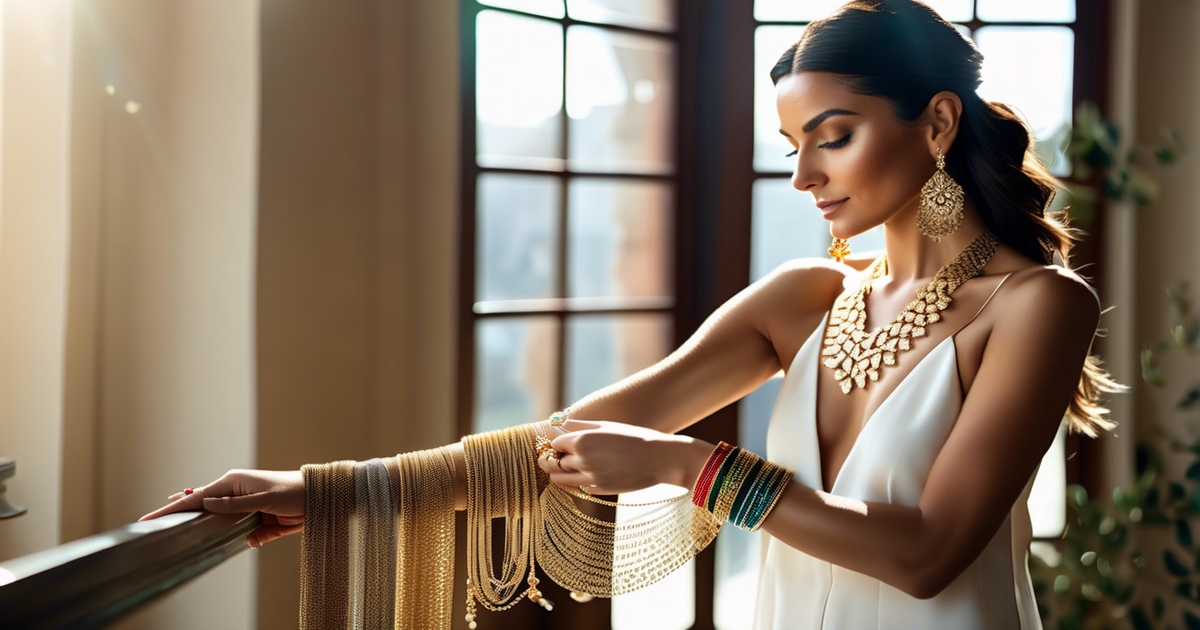
Olive skin is characterized by a unique green or gray hue that can appear sun-kissed throughout the year. It's variable – from light to dark and sometimes warm or cool or neutral leaning. Nailing your undertone aids in selecting colors that brighten the face rather than make it appear washed out or sallow.
Use the 3-second test. First, vein test in daylight: greener veins hint warm, blue or purple suggest cool, and blue-green or unclear point to neutral. Second, jewelry check: gold flatters warm, silver suits cool, and both look fine on neutral. Third, blush response: if a gentle pink flush brightens you, you may be cool; if coral or apricot looks lively, likely warm; if both work, you may be neutral.
Experiment with tops in different colors—periwinkle, rust, teal, camel—and look for brightness or sallowness around your mouth and under-eyes.
| Undertone indicator | Likely category | Clothing colors that tend to flatter |
|---|---|---|
| Green veins, gold jewelry, coral blush | Warm olive | Terracotta, rust, warm reds, burnt orange, mustard, olive green, cream |
| Blue/purple veins, silver jewelry, pink blush | Cool olive | Periwinkle, lilac, slate gray, navy, rose pink, icy blue, charcoal |
| Blue-green veins, both gold and silver, both blush types | Neutral olive | Taupe, soft peach, muted greens, navy, stone, cocoa, ivory |
Warm olive
Warm olive will frequently read golden-green, with greenish veins in daylight. Your skin may have a strong green or yellow cast, and next to other skin, it can look a little more green.
These earthy tones sparkle. Think rust, terracotta, pumpkin, tomato red, saffron, golden yellow, olive and moss greens, warm cream, camel. These colors mimic the warmth without graying the skin.
Avoid checklist:
- Neon lime, acid yellow: push too much yellow, make skin sallow.
- Cool pastels (mint, baby blue, lavender): drain warmth and look chalky.
- Ashy beiges and gray-beige: mute your glow and highlight green tones.
Gold jewelry, warm bronzer and peach-based blush look radiant. Peachy foundations can lean orange on olive, opt for neutral-warm bases then add the peach blush for oomph.
Cool olive
Cool olive has a bluish-green cast, blue or purple veins. The face frequently purifies and appears more fresh and fair in cool daylight.
Make a mad dash for soft lilac, periwinkle, slate gray, charcoal, navy, cool rose pink, cranberry, icy blue. These tones play down green while retaining brightness.
Avoid loud mustard, camel with a lot of yellow and orange-heavy reds as they create an unnatural, harsh contrast and will bring out sallowness. Silver jewelry and cool-toned makeup—pink or berry blush, neutral-cool foundations—often sit best.
Neutral olive
Neutral olive has a more neutral blend, usually with blue-green or colorless veins. It's adaptable, which is why olive is frequently referred to as neutral, but it can be warm or cool leaning.
Start with versatile anchors: taupe, stone, cocoa, navy, muted greens, soft peach, ivory. Then try them both—warm rust vs cool cranberry, golden yellow vs lemon, teal vs periwinkle—to see which one wakes your skin up that day.
Olive undertones can shift with season or light and look greenish or dull at times, so beware super ashy beiges that make the face look washed out.
The best clothing colors for olive skin
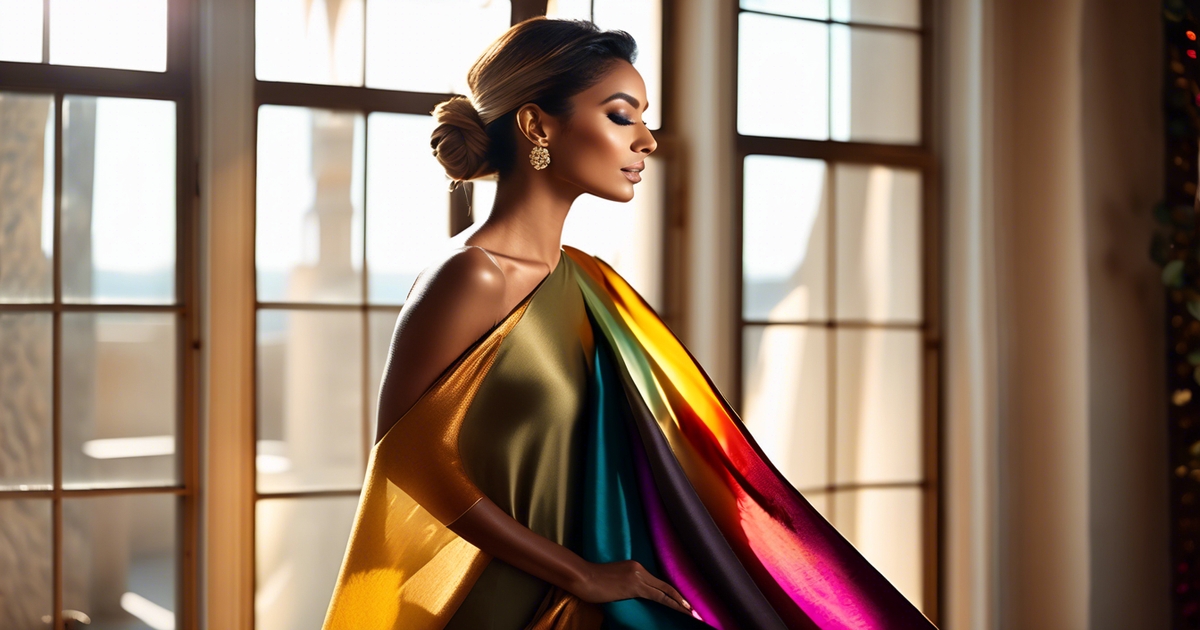
Olive skin tones sit in a sweet spot, characterized by warm undertones that are slightly green or golden and reactive to light. To enhance your olive complexion, choose flattering colors that resonate with that warmth or provide gentle contrast, avoiding harsh clashes. Carry a little swatch card in your bag, as real fabric translates more accurately than phone screens.
- Warm undertone olive: terracotta, brick red, burnt orange, warm mustard, caramel, and golden yellow keep the face bright. Warm greens and muted earthy browns are good, but choose mid-depth shades to prevent a sallow hue.
- Neutral undertone olive: deep teal, navy, taupe, creamy off-white, and apricot balance both sides.
- Cool undertone olive: periwinkle, soft mauve, plum, and blue-based berry lift the skin without draining it.
- Universal wins: rich earth tones, vibrant jewel tones, golden metallics, warm pastels, and selected neutrals. Steer clear of colder blues, soft greens and soft yellows — they tend to battle olive undertones.
1. Rich earth tones
Begin with terracotta, brick red, burnt orange and warm mustard. These bounce off the natural yellow-green undertone, so the skin appears vibrant, not dull. Earthy reds, soft corals, and rich burgundy bring depth without shouting.
Apricot and peach are great day options. They read warm but soft, which is good if bright colors drain you. Combine with neutral accessories—taupe loafers, sand belts or caramel bags—to give the look balance.
Build a capsule: a terracotta knit, mustard blouse, rust skirt, and caramel trousers. They blend fresh with beige, warm gray or navy, so looks pop easily.
2. Vibrant jewel tones
These rich shades complement your olive skin tone, which causes these colors to really stand out. Emerald can be drop-dead gorgeous — try it in a scarf first if you're hesitant. For cool-leaning olive, periwinkle and soft mauve lend vibrancy but no edge.
Wear jewel tones at night or more formal occasions. Anchor them with muted neutrals—warm gray blazer over teal, navy dress with taupe heels—to prevent overwhelming your glow.
3. Golden metallics
Rich gold, bronze and warm metallics provide a lit-from-within effect, particularly on warm olive. Warm colors like golden yellow or rich gold tops, or perhaps a bronze slip skirt, bring warmth near the face.
Keep metallics in accents if you want control: hoop earrings, strappy shoes, a belt buckle. If your undertone is very warm, forgo edgy silver — it'll make your skin look ashy.
4. Warm pastels
Go for warm coral pink, soft peach, and creamy off-white. I love a peach top with rust slacks–spring power, no washout.
Say no to icy pastels! They wash out olive's yellow-green base. Layer pastels with earth tones for equilibrium — peach beneath a camel blazer, coral T with olive chinos. Daytime and casual looks glimmer with these lighter hues.
5. Specific neutrals
Taupe, warm gray, navy and beige grounds everything. Creamy off-white wins over pure white, which can glare and drain.
Muted greens and dusty lavender act as contemporary "soft neutrals," providing intrigue without clamor. Caramel, sand and khaki just feel natural on olive skin, thanks to those shared undertones. Construct your foundation with these, then pull in coral, terracotta, or teal for elevation.
Colors that can wash you out
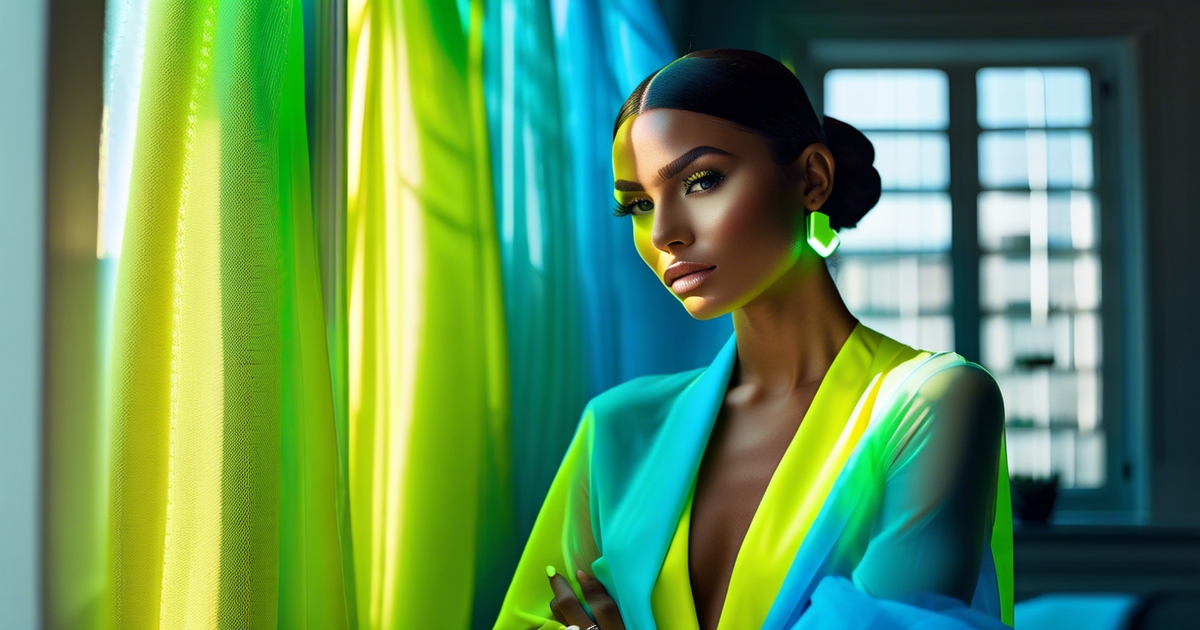
Olive skin, characterized by its green-gold undertones, can shift with the light, making it essential to choose colors that enhance your olive complexion rather than dull it. The goal is straightforward: select colors that provide contrast and warmth while steering clear of those that mirror or cool your undertone, especially for those with a neutral olive skin tone.
Bright neons and too-bright reds can clash with olive undertones and throw a sallow cast. Neon pink, electric lime and highlighter orange bounce really hard against green undertones in the skin and wash you out. Fire-engine red and scarlet, too, particularly in glossy fabrics. If you adore red, opt for deeper tones like brick, garnet or rust. They retain the heat and omit the blinding shine.
Icy blues, fluorescent yellows, and stark whites can emphasize any grayish areas or uneven tones in your skin. Colors like ice blue and cornflower can push your complexion into a cool zone that appears flat. Fluorescent yellow can be even more detrimental, reflecting back onto your face and transforming warmth into an unflattering greenish hue. If light neutrals are a must, choose softer shades like off-white, bone, or creamy ivory that are more inviting for olive skin tones.
Colder blues tend to work against olive skin, particularly for those with a cool olive skin tone. Cobalt, periwinkle, and chilly steel-blue can wash you out, dulling your vibrant complexion. Navy and many greys, especially charcoal and slate, can have a similar effect. For depth without losing warmth, explore inky indigo, midnight blue with a hint of warmth, or soft mushroom instead of cooler greys.
Soft greens and yellows can be tricky for olive skin tones, as they often blend too closely with your undertones. Colors like sage, pistachio, celery, and pale maize may blur the lines of your face, making you appear washed out in photos. Pastels can be divisive for olive skin; while some may glow in lilac or blush, others can fade away. When uncertain, choose richer alternatives: emerald over mint, and amber over pastel lemon.
Trying it out counts. Hold the color up near your face in natural light, preferably by a window at noon. Watch for three things: does your face look brighter, does it show shadows or gray, and do your eyes look more clear or less? If a color washes you out, avoid it.
Earthy hues like amber, caramel, terracotta, and the vibrant emerald can be excellent choices for olive skin. Complementary neutrals include beige, taupe, and creamy ivory. Jewel tones such as ruby and emerald provide a striking contrast and lift to your complexion. The key rule remains: avoid shades too close to your skin tone; instead, select hues that frame and enhance your unique complexion.
Beyond color: fabric and light
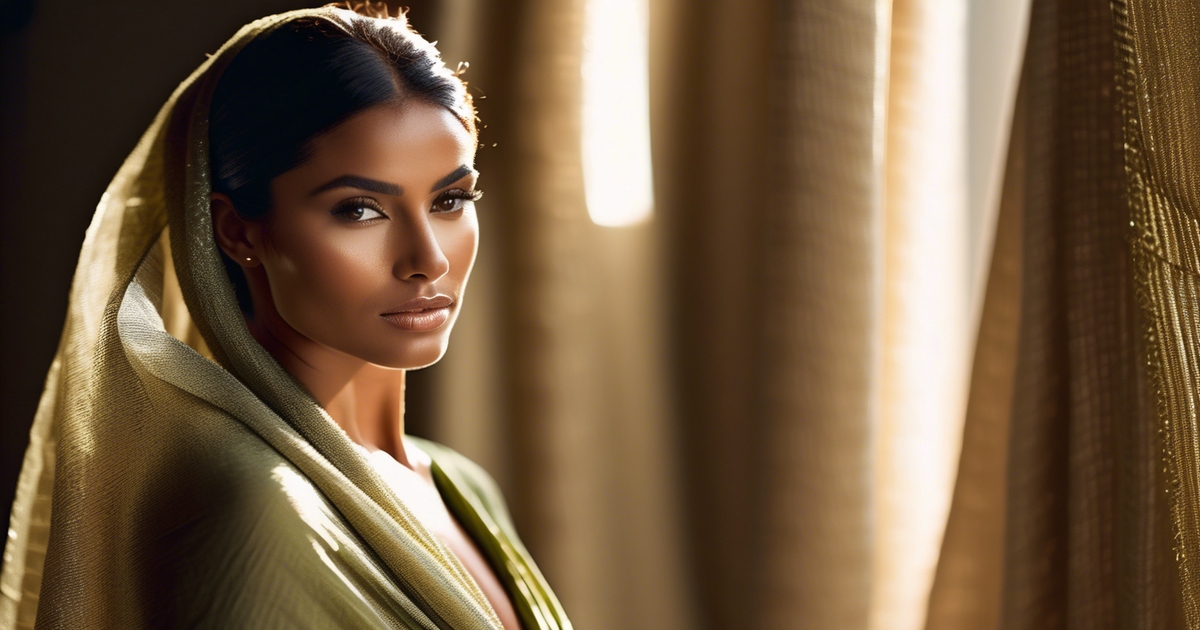
Color doesn't solely determine the outcome on olive skin tones; rather, fabric and light can significantly alter the perception of color on a neutral olive skin tone. For instance, flat weaves can mirror light crisply, while textured weaves diffuse it, often introducing richness that complements the unique complexion. Additionally, sheen—whether matte, satin, or glossy—shifts how a shade plays down, making certain colors more flattering for toned individuals.
Fabric texture
Textured fabrics such as knits, linen, tweed, corduroy, and velvet amplify color payoff on olive skin tones by diffusing light. A good rib-knit makes jewel tones seem richer, especially for those with a neutral olive skin tone. Washed linen makes earth tones shimmer, not fall flat. Velvet intensifies mid-tone colors in low light, which is particularly beneficial for evening affairs.
Don't go for heavier glittery or clingy materials—thin satin, cheap poly jersey, high-gloss sequins. They can cast hard highlights and draw the eye to uneven texture or fabric lines.
Blend matte and textured together to create equilibrium. A soft matte tee under a nubby blazer, or a linen shirt with smooth twill trousers, add dimension without shine.
Mask weight and drape. Light, loose weaves in warm months (cotton voile, linen) feel fresh and breathe, especially for those with a light olive skin tone. Denser fabrics in cold seasons (wool gabardine, ponte) wear darker shades well. Personal note: cotton and linen look more vivid in the sun, while some synthetics seem dull.
Checklist—fabric and sheen:
- Matte: cotton poplin, wool flannel, ponte; steady color.
- Subtle sheen: silk crepe, sateen, mercerized cotton; gentle lift.
- Textured: slub linen, boucle, waffle knit; depth and interest.
- Avoid high-gloss unless evening: mirror satin, lamé.
Natural light
Daylight generally offers the most honest read of skin and fabric. Morning light is cooler and soft, as is late afternoon, warmer and low. Colors can change with the hour, so observe what transforms.
Always double check new buys by a window or outside. Hold the fabric close to your face, and then step away. If it still appears clear and warm — it's a keeper.
Snap a quick selfie or use a mirror near a window. Soft, diffused light is better than brutal noon sun, which can wash out the mid-tones.
Build a simple chart: list shades, add a photo in sun and one indoors, rate clarity from 1–5. You'll see patterns quickly.
Artificial light
Artificial light distorts color on olive skin. Fluorescents lean green or cool. Yellow bulbs can muddle soft neutrals. Try outfits in office light, warm restaurant light, and cool retail light if that's your daily combination.
At home, employ warm, high-CRI LED bulbs to simulate daylight and maintain skin undertones balanced. POSITION A LAMP AT YOUR EYE LEVEL FOR SOFT, DIFFUSED LIGHT — NOT OVERHEAD GLARE.
Keep "safe" colors for tricky lighting: deep teal, forest green, oxblood, charcoal, navy with a slight sheen, and soft white with a cream base. These remain constant across bulbs.
Lighting checklist:
- Cool LED: can blue-shift; check reds and pinks.
- Warm LED (high CRI): most balanced; good all-round.
- Fluorescent: test greens and beiges; they may turn sallow.
- Spotlight/harsh light: use texture to diffuse shine.
Styling for different olive shades
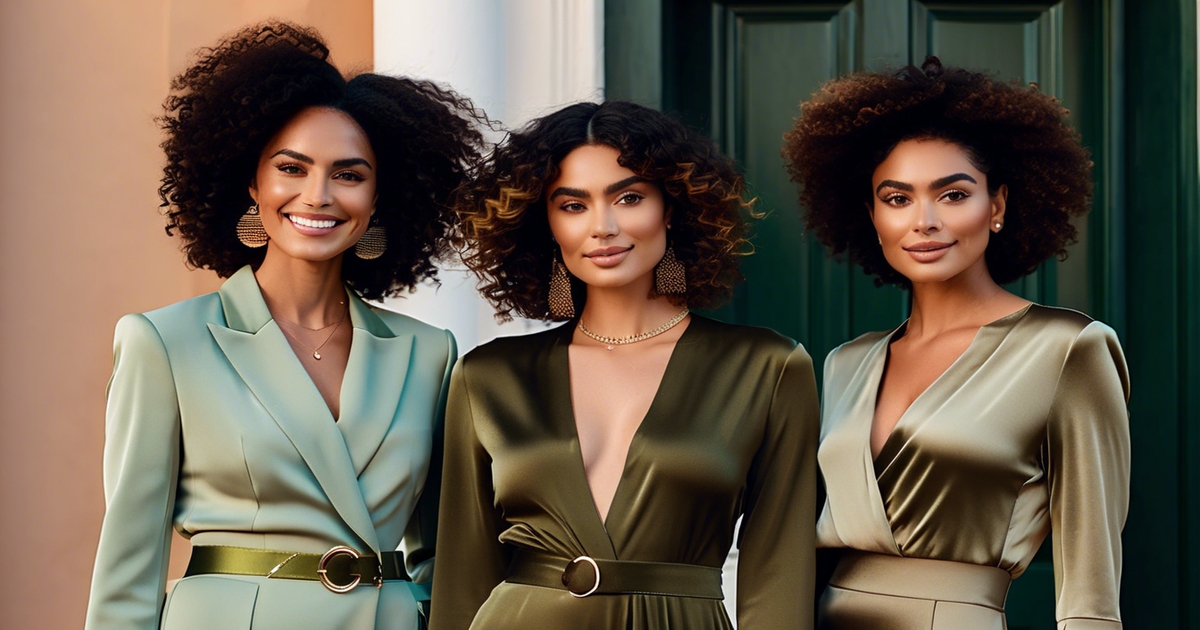
Olive is the intersection of undertones. It tends to come off green or gray or yellow washed over heat, so one person can rock the same shade and another person — nothing. Aim to match depth and contrast: lighter, softer shades for pale olive; richer, deeper hues for dark olive; mid tones for the wide middle.
Then refine by observing if your major tone is more green or yellow, and if your contrast level is low or high.
Light olive (pale, often muted features)
Opt for breezy neutrals and muted hues that won't compete. Creamy ivories, beiges and taupes keep the face bright without washing it away. Soft navy provides a soft depth without harsh edges.
Moss green reflects the skin's undertone in a soothing manner. Muted berry and dusty rose provide a nice quiet warmth that appears alive, not ruddy. If you tend yellow, tone down with blue-hued colors such as periwinkle or slate blue.
If you lean green, counter with warm pinks like muted coral-rose instead of orange. Pass on brights, neons or icy shades, they spark contrast and can make olive read sallow.
Medium olive (balanced depth, variable contrast)
It's a generous range. Earthy colors are a reliable foundation– olive, khaki, warm browns and terracotta-adjacent pinks (more muted clay than orange). Taupe, creamy ivory and stone grays act as everyday anchors.
When features are low-contrast, keep the palette soft: moss, soft navy, dusty plum, muted berry. When features are high-contrast, add clear accents: teal, cobalt, true red with blue base.
If your skin leans yellow, avoid rust, pumpkin and orange, they accentuate the undesirable yellow/green. Pale peach or hard coral can make the skin look ruddy. Try to style for different olive shades.
Dark olive (deep, often high-contrast features)
Depth adores depth. Go for jewel tones—ruby, emerald, sapphire—for fresh, strong pop that stands up to low light and photos. For daylight, rich espresso, charcoal and deep navy define edges without shine.
Burgundy, forest green, and inky teal add lush color without veering into orange. Neutrals such as creamy ivory and warm beige will lift the face when close to the collar.
If your undertone is more green, counterbalance with wine, plum or magenta—not orange or rust. If more yellow, embrace cool jewel blues and blue-reds.
Have fun with contrast and layering—a deep base, a crisp light shirt, one vivid accent—to surround your skin and maintain balance.
| Olive shade | Best colors |
|---|---|
| Light olive | Creamy ivory, taupe, soft navy, moss, muted berry |
| Medium olive | Taupe, stone, olive, dusty plum, teal accents |
| Dark olive | Emerald, sapphire, ruby, deep navy, burgundy |
Conclusion
To sum it up, olive skin gets along with deep, vibrant colors. Think teal, cobalt, jade, cherry red and crisp whites. These colors rouse the skin. Soft pastels and dusty tones can wash out the face. If you love 'em, put some shine or texture into 'em to revive. Light aids as well. Sunlight enhances warmth. Cool shop lights can mute it.
That small adjustment can move the entire aesthetic. Trade beige for camel. Opt for navy instead of black. Try peach vs coral. Drape tops close to your face and review in sunlight. Take notes on victories.
Style evolves from little experiments, not grand mandates. Go for one daring selection this week. PS – What's your go-to shade, or pop in here for a fast color consult. I'm here to assist.
Frequently Asked Questions
How do I know if I have an olive skin tone?
Check for a greenish or muted cast to your neutral olive skin tone. Veins can appear green-blue, indicating you might have a cool olive undertone. You likely tan easily and seldom blush rosy pink. Gold jewelry complements your olive complexion well, and if neutral foundations turn grayish, that's a typical olive skin tone tip!
What clothing colors flatter olive skin most?
Jewel tones shine: emerald, teal, sapphire, and amethyst. Earthy tones such as terracotta, camel, and olive skin tones do the trick. Crisp white, charcoal, and navy are all fabulous neutrals that pop against your olive complexion, illuminating your skin.
Which colors should I avoid if I have olive skin?
Then, stay away from muddy beiges, ashy pastels, and gray-taupes, as they can mute your radiance and may not complement olive skin tones. Hot yellow mustard and neon lime can highlight sallowness, especially for those with a neutral olive skin tone.
Do lighter or darker olive tones need different colors?
Yes. Light olive skin tones look great with soft jewel colors and cool pastels that have a bit of depth, such as dusty rose or soft teal. Medium olive skin tones glow in saturated gems and warm earths, while deep olive complexions shine in high-contrast colors like cobalt, emerald, and crisp white.
How do fabric and lighting affect color on olive skin?
Shiny fabrics amplify colors and contrast, especially for those with a neutral olive skin tone. Matte fabrics mute it, while natural light reflects authentic colors. Warm indoor light can make it look yellower, so try your outfits by a window to ensure the shades suit your unique complexion.
Can I wear black if I have olive skin?
Yes. Black is bold on medium to deep olive skin tones, particularly with texture or shine. For light olive skin, tone down black with white, camel, or silver or gold jewelry. If black seems too severe, then charcoal or deep navy offer that same sharpness.
What metals and accessories work best with olive skin?
Both gold and silver adorn neutral olive skin tones beautifully. Choose based on outfit undertone: gold with warm earths for warm undertones, silver with cool jewels for cooler skin tones. Gemstones such as emerald and turquoise intensify the olive complexion and enhance its natural glow.